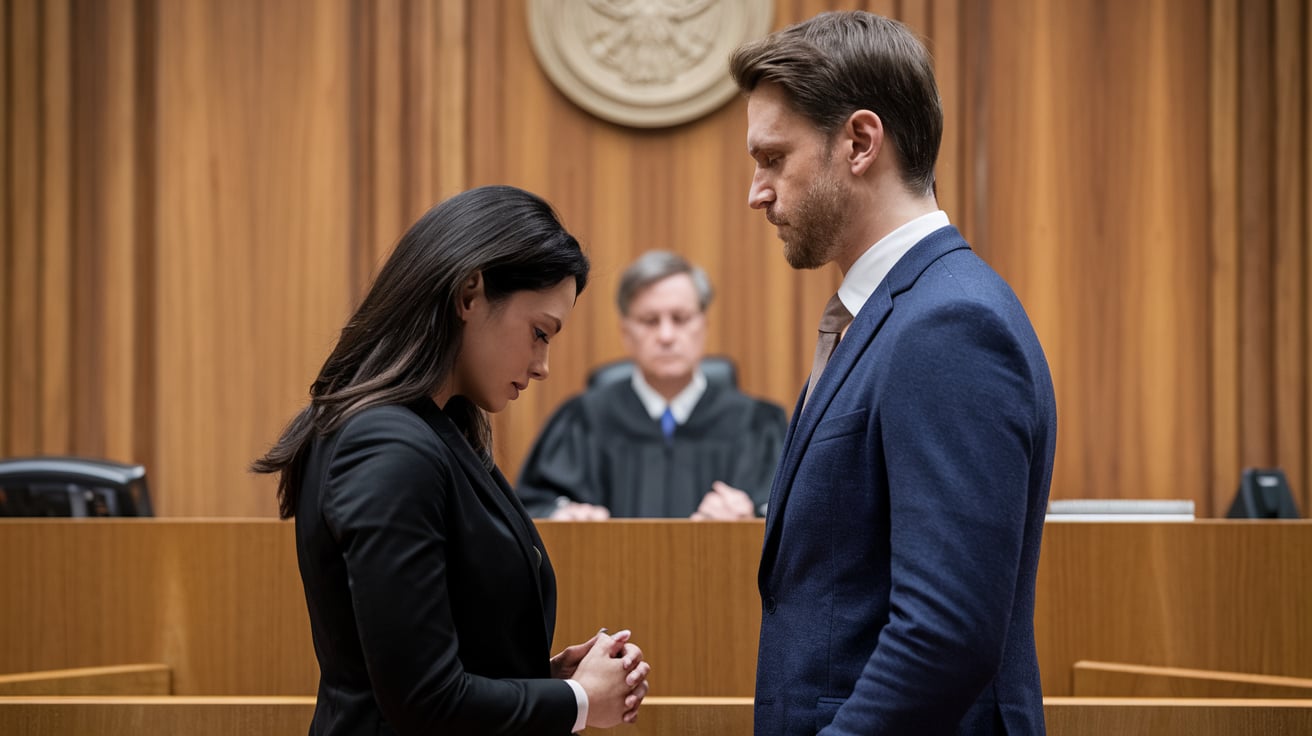Every child deserves stability, but sometimes, change is the path to providing that stability.
But getting a custody agreement modified might seem like climbing a mountain.
Questions swirl around: Is this the right time? What proof is needed? How will the other parent react?
These are normal concerns that many parents share when considering a modification to their custody arrangement.
Parents going through this blog will learn the steps to modify their custody agreement, what factors courts consider important, and how to present their case effectively.
Understanding Custody Agreement
A custody agreement spells out how parents will share time and make decisions for their children. It covers the basics – where kids will live, their school arrangements, and healthcare choices.
This legal document puts everything in writing, from holiday schedules to pickup times. Most importantly, it helps prevent confusion and creates clear rules for both parents to follow.
Think of it like updating your phone – you need to know your version before you can get the newest one. The same goes for custody plans – understanding what you have now helps make better changes later.
What Factors Influence Child Custody Modifications
These factors help courts decide if changing your custody agreement serves your child’s best interests. The key is showing how these changes affect your child’s well-being and daily life.
Steps to File Child Custody Modifications
Once you have identified the factors affecting your custody situation, here’s how to take action on modifying your agreement. The process requires careful planning and attention to detail.
Step 1: Review Current Agreement
Your first job is to understand what you have now before asking for changes. Pull out your current custody order and read it carefully. Use a highlighter to mark the parts you want to change. Think about your child’s needs:
- Look at the current living schedule and how it affects your child
- Check if the current plan fits with school times and activities
- Note any health or medical needs that have changed
- Consider if your child’s age needs different arrangements
- Think about how each parent’s time is being used
Step 2: Document All Changes
Good records make your case stronger. Start a folder or digital file to keep track of everything that’s changed since your last custody order. Keep records of:
- Your new work schedule and how it affects parenting time
- Any moves or address changes that impact travel time
- School performance reports or teacher comments
- Medical appointments and health updates
- Times when the current schedule caused problems
- Notes about your child’s activities and needs
Step 3: Talk to Your Co-Parent
Before going to court, try having an honest talk with your co-parent. Pick a calm time when you’re both free to focus. Here’s how to handle the talk:
- Meet in a quiet place where you can speak freely
- Start by sharing your concerns about your child
- Use “I” statements to explain what you’ve noticed
- Write down what you both say during the talk
- Stay calm even if things get tense
- Focus on finding solutions together
Step 4: Try Mediation
Mediation helps many parents avoid court. A mediator is like a referee who helps both parents find good solutions. During mediation:
- Both parents get time to explain their views
- The mediator helps find a middle ground
- You can try different solutions safely
- Everything stays private
- You might save money compared to court
Step 5: Fill Out Legal Papers
This step needs careful attention. Wrong paperwork can slow everything down. So, have someone else look at your forms before you turn them in. When filling out forms:
- Ask the court clerk which forms you need
- Read all instructions twice before writing
- Fill in every blank space
- Write clearly about what’s changed
- Explain how changes help your child
- List facts that support your requests
- Check spelling and dates
Step 6: Give Papers to Court
Filing papers means following exact rules. Each court has its own way of doing things. Remember to:
- Make copies of everything you file
- Keep one copy for yourself
- Have money ready for filing fees
- Ask about fee waivers if you need help
- Follow the rules about telling the other parent
- Get proof that papers were given to everyone
- Write down all due dates
Step 7: Wait for the Court’s Response
The waiting period can test your patience. Remember, this time allows the court to review your case thoroughly and gives the other parent a fair chance to respond. Use this time well. During this time:
- Check your mail every day
- Save all court letters
- Put hearing dates on your calendar
- Get your evidence ready
- Talk to any witnesses
- Practice explaining your case
- Keep tracking new information
Step 8: Go to Court
Your court date is approaching. This is your chance to present your case clearly and professionally. Good preparation makes a big difference. Being ready helps you stay calm. On court day:
- Dress neatly, like for a job interview
- Bring all your papers in order
- Speak clearly and with respect
- Answer only what the judge asks
- Stay focused on your child’s needs
- Keep your emotions steady
- Listen carefully to everyone
Step 9: Follow Through
The judge has made their decision, but your responsibilities aren’t over. Following through will properly make sure the new arrangement works as intended. After court, you need to put the new plan into action. Take these steps:
- Read the new order carefully
- Mark start dates for changes
- Tell your child’s school about new schedules
- Update emergency contact lists
- Give new schedules to doctors
- Keep good records of the new plan
- Stay in touch with your co-parent about changes
Remember, you can always go back to court if things aren’t working, but try to make this new plan work first.
Cost Breakdown of Child Custody Modifications
| Expense Category | Estimated Cost Range | Notes |
|---|---|---|
| Filing Fees | $200 – $500 | Court fees vary by state. Some courts offer fee waivers based on income. |
| Legal Forms Preparation | $50 – $200 | Self-help centers might offer free assistance. |
| Mediation Services | $500 – $2,500 | Private mediators charge per session. Court-connected mediation may be free or low-cost. |
| Attorney Consultation | $200 – $500 | One-time meeting to review your case. |
| Full Attorney Representation | $3,000 – $10,000 | Costs depend on case complexity and location. |
| Court Reporter Fees | $300 – $600 | Required for some hearings. |
| Service of Process | $50 – $150 | Cost to legally notify other parents. |
| Document Copies | $20 – $100 | Official copies of court orders and records. |
| Parent Education Classes | $50 – $200 | Some courts require these classes. |
| Travel Expenses | Varies | Consider transportation costs to court and meetings. |
Additional Cost Factors:
- Emergency modifications might incur extra fees
- Complex cases may require expert witnesses
- Some courts charge for each motion filed
- Payment plans might be available
- Financial aid options exist in many jurisdictions
Conclusion
To wrap it up, changing your custody setup isn’t quick or easy, but don’t let that stop you.
Think of it like updating your family’s playbook – sometimes, you need new plays to make the team work better.
Remember, you’ve got this! Take one step at a time, breathe deep, and stay calm. The best outcomes happen when parents work as a team, even if they’re not on the same court anymore.
Your kids will thank you later for making these tough calls with their happiness in mind.
Frequently Asked Question
Who Wins Most Child Custody Cases?
The parent who can prove they are the most stable and capable caregiver often wins child custody cases.
What is The Biggest Mistake in a Custody Battle?
The biggest mistake in a custody battle is prioritizing personal feelings over the child’s best interests.
What is The Best Evidence for Child Custody?
The best evidence for child custody includes documentation of the child’s living environment, health records, and proof of involvement in their daily life.









